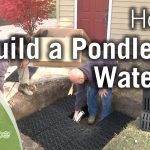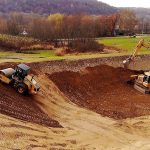Building a wooden fish pond in your backyard can be a rewarding and aesthetically pleasing addition to your outdoor space. Not only does it provide a tranquil environment for relaxation, but it also creates a habitat for aquatic plants and fish, adding a touch of nature to your surroundings. In this comprehensive guide, we will take you through the step-by-step process of building a wooden fish pond, from planning and design to construction and maintenance.
Planning and Design
Before you start building your wooden fish pond, it’s essential to carefully plan and design the layout to ensure a successful and functional end result. Consider the following factors:
Location
Choose a suitable location for your fish pond, taking into account factors such as sunlight exposure, proximity to trees, and the overall aesthetic of your backyard. Ensure that the area is level and free from any underground utilities.
Size And Shape
Determine the size and shape of your fish pond based on the available space and your personal preferences. Consider the dimensions carefully, keeping in mind the type and number of fish you plan to accommodate.
Materials
Select high-quality, weather-resistant wood for the construction of your pond. Cedar and redwood are popular choices due to their durability and natural resistance to decay. Additionally, you will need a pond liner to prevent water leakage and a filtration system to maintain water quality.
Construction Process
Once you have completed the planning and design phase, it’s time to begin the construction of your wooden fish pond. Follow these steps for a successful build:
Excavation
Start by marking the outline of your pond using stakes and string. Use a shovel or a small excavator to dig out the designated area, ensuring that the depth is consistent throughout. Remove any rocks, roots, or debris from the bottom of the excavation site.
Frame Installation
Construct a sturdy frame using the chosen wood, ensuring that the dimensions match the planned size and shape of the pond. Use galvanized screws or nails to secure the frame, creating a strong and stable structure. Be sure to leave openings for the installation of the pond liner and filtration system.
Pond Liner Installation
Place the pond liner inside the wooden frame, ensuring that it is positioned evenly and free from wrinkles or folds. Trim any excess liner, leaving a sufficient overhang to secure it to the frame. Use rocks or bricks to hold the liner in place temporarily.
Water Fill And Filtration
Fill the pond with water, allowing the liner to settle into place naturally. Install a suitable filtration system to maintain water quality and ensure a healthy environment for your fish. Consider adding aquatic plants to enhance the ecosystem and provide natural filtration.
Maintenance and Care
Once your wooden fish pond is complete, it’s important to establish a regular maintenance routine to ensure its longevity and the well-being of its inhabitants. Follow these maintenance tips:
Water Quality Testing
Regularly test the water quality using a pond water testing kit to monitor pH levels, ammonia, nitrites, and nitrates. Adjust the water parameters as needed to maintain a healthy environment for your fish and plants.
Algae Control
Monitor the pond for excessive algae growth and implement control measures as necessary. Consider adding algae-eating fish or using natural remedies such as barley straw or aquatic plants to help manage algae levels.
Feeding And Monitoring Fish
Establish a regular feeding schedule for your fish, providing them with a balanced and nutritious diet. Monitor their behavior and appearance for any signs of stress or illness, and address any issues promptly.
Seasonal Care
During the winter months, take precautions to prevent the pond from freezing over completely. Consider using a pond heater or aerator to maintain an opening in the ice, allowing for gas exchange and the release of harmful gases.

Credit: www.monsterfishkeepers.com

Credit: www.youtube.com
Conclusion
Building a wooden fish pond is a fulfilling project that can bring natural beauty and tranquility to your backyard. By carefully planning and designing the layout, using high-quality materials, and following proper construction and maintenance practices, you can create a sustainable and thriving aquatic ecosystem for your enjoyment. With the right care and attention, your wooden fish pond will become a captivating focal point in your outdoor space, providing a haven for fish, plants, and relaxation.
Whether you are a novice or experienced DIY enthusiast, building a wooden fish pond can be a rewarding and enjoyable project. Take the time to plan and design your pond, and follow the construction and maintenance guidelines to ensure a successful and sustainable aquatic habitat for years to come.




